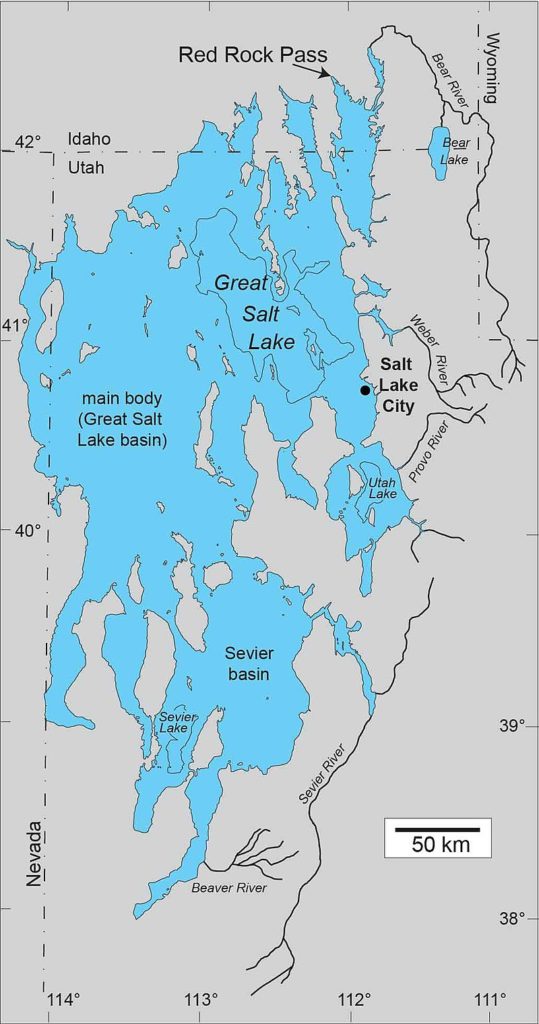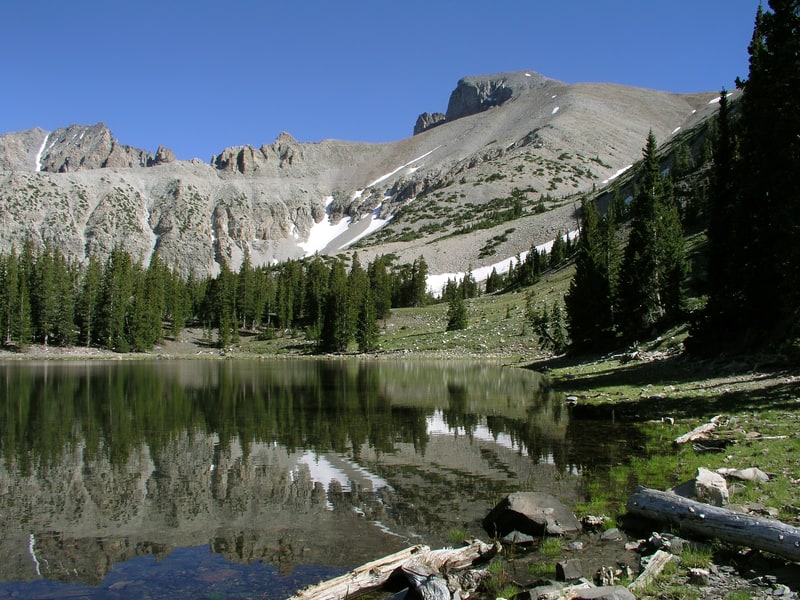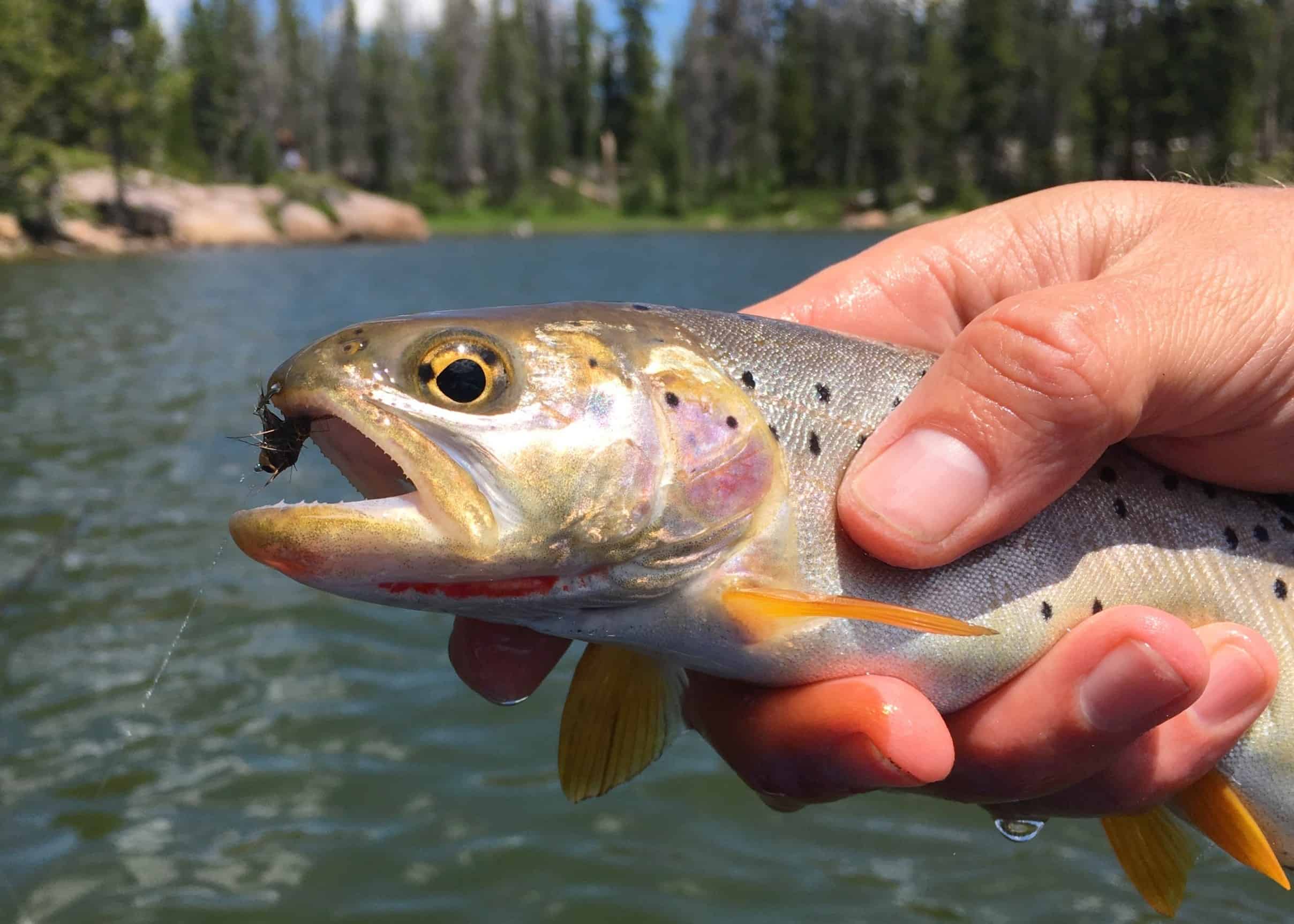Bonneville Cutthroat Trout: A Prominent Member Among Nevada’s Six Native Salmonid Species
To complete Nevada’s Native Fish Slam, you must catch a Bonneville Cutthroat Trout. This article will tell you where to find Bonneville Cutthroat Trout in Nevada.
Bonneville Cutthroat Trout was already there before the first European explorer arrived in the Silver State. They are remnant species from Lake Bonneville, an ancient freshwater sea that covered much of western Utah and parts of eastern Nevada and southern Idaho. It covered roughly 20,000 square miles at its apex, and the area that Salt Lake City, Utah, occupies today was under 1,100 feet of water. This was approximately 15,000 years ago.
As Lake Bonneville receded, these fish became isolated in mountain headwater streams and a few lakes that are remnant waters of Lake Bonneville, like Utah and Panguitch lakes.

Reviving the Bonneville Cutthroat Trout: A Species Once Thought to be Extinct
Like other trout species native to the western United States, Bonneville Cutthroat trout did not do well as their native range became settled by European Americans. For around 30 years, until the 1970s, Bonneville Cutthroat trout were considered extinct.
The general article entitled Bonneville Cutthroat Trout and the article entitled Utah Bonneville Cutthroat Trout covers the details more fully, but suffice it to say that in around 1974, a population of Bonneville Cutthroats was discovered in Utah. Subsequent populations were also discovered in other parts of their native range. Fisheries managers have successfully orchestrated a triumphant comeback for these fish sufficiently that they are now available to anglers in some of their native waters.
Prime Locations to Discover Bonneville Cutthroat Trout in Nevada
You won’t find any giant fish in any of the waters I will mention. A 13 incher is considered a real trophy. You will find beautiful scenery, which is, after all, a big part of why we go fishing, right? You’ll also find solitude and an absence of crowds of other fishermen. When you find the fish, they’ll be eager to bite.
If you have the time and interest to explore, there is a lot of old west history connected to where these fish reside. Take plenty of supplies with you and a good spare tire in some of these places, and enjoy.
From the state’s list of fishable waters, the following streams have fishable populations of Bonneville Cutthroat Trout in Nevada.
- Big Wash
- Deadman Creek
- Deep Canyon Creek
- Goshute Creek
- Hendry’s Creek
- Mill Creek
- Ridge Creek
- Silver Creek
- Smith Creek
- Snake Creek
- Strawberry Creek
- Willard Creek
Silver Creek
To reach Silver Creek from Baker, Nevada, take Route 487 north to U.S. Route 50/6. Go left on 50/6 for .3 of a mile to the junction with Silver Creek Road/White Pine County Road 41. Turn right on Silver Creek Road and follow it 2.8 miles to Silver Creek Reservoir. Silver Creek Reservoir is fed by the Silver Creek, and past the reservoir, Silver Creek road parallels Silver Creek.
Muncy Creek
Muncy Creek is around 42 miles from Majors Place, Nevada. Take U.S. Route 50/6 east for 1.9 miles to turn left on Nevada Route 893. Go north on route 893 for 39.8 miles. Muncy Creek crosses under 893. After traveling 39.8 miles on 893, turn left on NF-431 and go for about a mile to the access point.
Smith Creek
Deadman Creek and Deep Canyon Creek are both branches of Smith Creek. Access to Smith Creek is around 32 miles out of Baker, Nevada. To get there, take route 488 north to the U.S. route 50/6 east across the Utah border for 3.6 miles, then turn left on Gandy Road. Take Gandy Hwy north for 17.6 miles, then turn left again and go for 2.7 miles before turning left on NF-460 back across the border into Nevada. Follow NF460 another 2 miles to where it turns slightly right and turns into Smith Creek Road. Follow it another 1.6 miles to Smith Creek.
Hendry’s Creek
To get to Hendry’s Creek, drive east out of Ely, Nevada, on Hwy 50/6
towards Great Basin National Park. Cross over Sacramento Pass,
heading towards Utah. Before the junction for state route 487
to Baker and Great Basin National Park, you’ll come to a dirt road
coming in from your left. Take this road heading
north for about 11 miles, then take a left on a dirt road heading west.
There should be a sign here for Hendry’s Creek.
Follow this 3.5 miles until the road ends and you see a good
parking place. The trail follows the creek bed.
Hampton Creek
Directions for Hampton Creek are much the same. Follow the exact directions for Hendry’s Creek, but Go another 4.2 miles on the main road past the Hendry’s turnoff, then take a left on a dirt road heading west.
There should be a sign here for access to Hampton Creek.
Follow this for 4.5 miles and find a good place to park. The trail
follows the creek.

Great Basin National Park
Strawberry Creek, Snake Creek, Ridge Creek, Pine Creek, North Fork Big Wash, South Fork Big Wash, and Mill Creek are all within the boundaries of Great Basin National Park and flow from the Snake Range of mountains. Strawberry, Snake, North Fork Big Wash, South Fork Big Wash, and Mill Creeks flow eastward into the Snake Valley, while Pine and Ridge Creeks flow westward into Spring Valley.
Big Wash Creek
North and South Big Wash Creeks converge to the east of the Great Basin National Park boundary into Big Wash Creek. Big Wash Creek flows eastward into Utah. It terminates at Pruess Lake.
Big Wash Creek access is around fifteen miles out of Baker, Nevada. Click on the Big Wash Creek heading for map directions.
Goshute Creek
Goshute Creek is north of the old mining town of Cherry Creek on the east side of the range of mountains with the same name. Take White Pine County Road 25 from Cherry Creek for 12.3 miles to the end of the road at Goshute Canyon. A trail follows Goshute Creek.
The Town of Cherry Creek
As a side note, I found the following Quote on Cherry Creek’s town from the Great Basin Heritage website.” Here, Cherry Creek, Nevada, at one time, was the largest town in White Pine County. Part of the Cherry Creek Mining District, most gold and silver were produced between 1872 and 1883. At the peak of its prosperity, the town had an estimated population of 6,000.
Five miles south of Cherry Creek is Egan Canyon, where Nevada’s oldest gold mines were located. As early as 1850, Indians mined gold there. Major Howard Egan discovered a stage station in 1859 for Woodward and Chorpenning’s California Mail Co.
In 1860, this station was used by the Pony Express as a change station, and from 1861 to 1869, it was an Overland Stage station. In 1864, a five-stamp mill, the first in Eastern Nevada, and a small mining camp were constructed. Most of the early activity had ceased by 1883.
But in 1897, mining activity was greatly revived, which lasted into the early 1900s. Before the completion of the Nevada Northern Railroad in 1906, freight and passenger traffic was via long strings of massive freight wagons and stagecoaches from Toano and Wells to the north.
In 1933, the old mine was re-opened, and a new camp was built. Over the years, production from the Egan mine has been approximately $3 million.
Cherry Creek still has about 20 permanent residents, and their homes stand next to many abandoned buildings built in the 1800s. The 110-year-old Cherry Creek Barrel Saloon still serves spirits and sells “Whoopie Sticks,” and the Cherry Creek School has been turned into the Cherry Creek Museum.
Built in 1872, the Cherry Creek School is one of the two oldest-standing Nevada schoolhouses. In November 1894, a dispute between Pat Green and Pat Dolan about the building’s location turned violent, with Dolan killing Green in a gunfight.
Peak enrollment at the school was 56 students. In 1901, a gasoline-fueled lantern exploded and burned several buildings, nearly destroying the schoolhouse.
After the last class in 1941, the building was used as a post office until 1971. The schoolhouse was acquired by Walter Campbell in 1994 and has been converted into a museum open by appointment.”
Perhaps history is not your thing. Since you are there anyway, I think knowing a bit about the area is cool.
Good Luck, Go Prepared and Enjoy the Back Country
Be sure to thoroughly plan any outings and be prepared with adequate fuel, groceries, and water. Most Bonneville Cutthroat Trout in Nevada will be a ways from any town. You can get by with a purification straw or similar system for water. I can’t stress it enough, though. You’ll have a much more enjoyable time if you’re prepared for the conditions you’ll encounter.
One last thing: here’s the link for the Nevada Department of Wildlife. Be sure you are up to date on current fishing regulations.
Recent Posts
The only venomous snakes in Washington State are Northern Pacific Rattlesnakes. The Northern Pacific Rattlesnake (Crotalus oreganus oreganus) is a sub-species of the Western Rattlesnake. Anyone...
Skunks are not classified as true hibernators. But they go into a state of torpor when the weather gets cold. Skunks are light sleep hibernators, along with opossums, bears, and raccoons. ...

